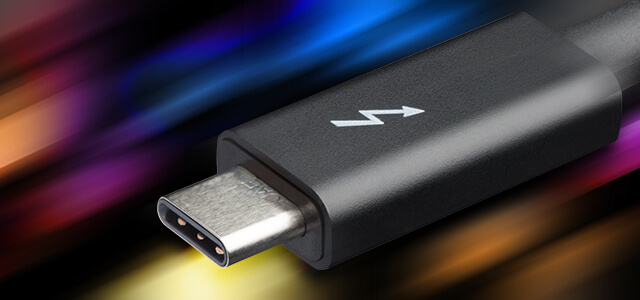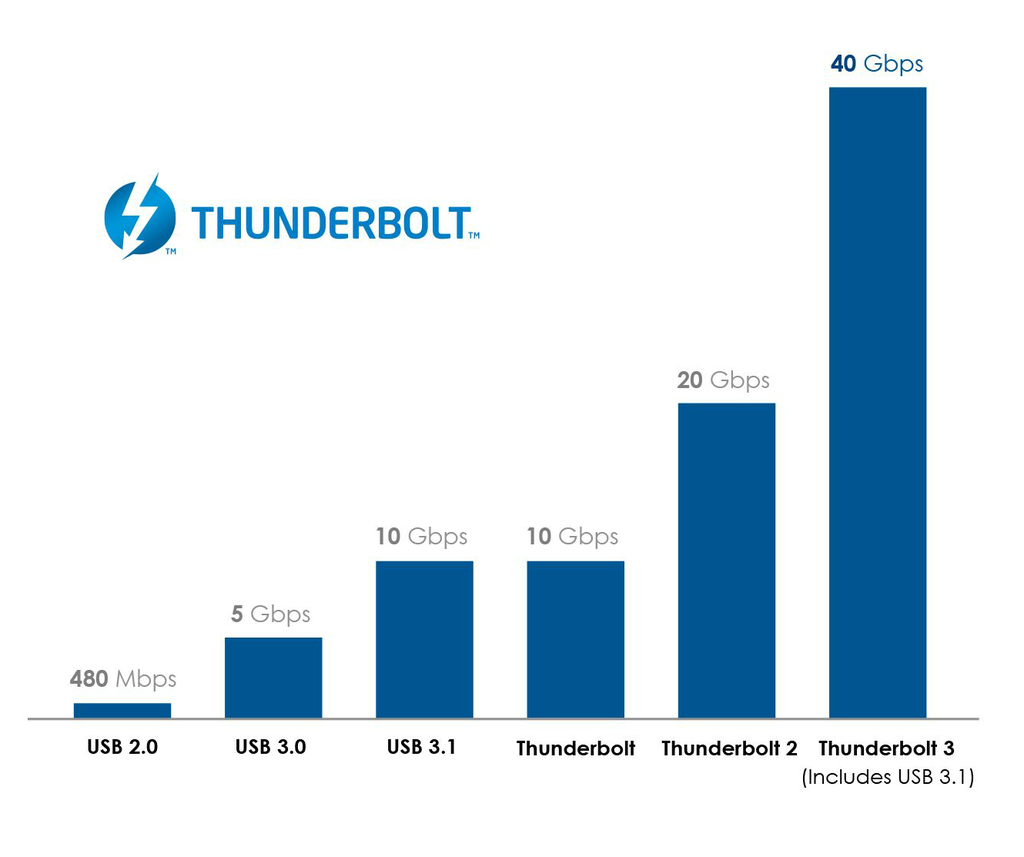
There’s a new version of Thunderbolt in town. Dubbed Thunderbolt 4, the ubiquitous but often misunderstood interface brings some key benefits to the table with this latest iteration. But how does it compare to previous gen Thunderbolt 3 or even USB 3.1/3.2?
What’s new – Thunderbolt 3 vs 4
While Thunderbolt 4 still has all of the features of the previous generation such as flexibility in connecting displays, storage, peripherals, and charged devices, it offers some key improvements over previous gen.
- Speed – Though total bandwidth is still the same at 40Gbps, PCIe data requirements specifically have doubled from 16Gbps to 32Gbps. This means external PCIe devices like storage and eGPUs will perform much better with Gen 4.
- Security – DMA protection helps mitigate security threats from sketchy external devices
- Wake from Sleep – Some peripherals can now wake your PC from sleep when connected via Thunderbolt
- Docking capability – Though this is also a feature of Thunderbolt 3, it’s worth discussing Thunderbolt’s docking and expansion capability. Because of the high throughput, you can connect multiple devices with an external dock through one single Thunderbolt port. Thunderbolt’s bi-directional capability means this single port can handle video out and data in concurrently without slowing down performance, making Thunderbolt an extremely versatile and dynamic solution.

Thunderbolt 4 vs USB C
We’ve touched base on the differences between Type C and Thunderbolt in previous posts. For the most part, the story is the same with Gen 4, but the highlights are worth repeating. Basically, Type C is the form factor of the port connection and supports interface speeds anywhere from USB 2.0 all the way to Thunderbolt 3 or 4. The speeds your specific Type C will support depends on the build itself, but if it’s not specifically marked as Thunderbolt, it’s likely a USB standard of some type. This means speeds of no more than 20GBps (top bandwidth of USB 3.2 2×2).
Supported devices
In addition to the increased bandwidth, it’s Thunderbolt’s versatility that really sets it apart from other interfaces like USB. Just a few of the devices you can connect via Thunderbolt 4 include:
- Monitors
- External storage
- External graphics
- Video capture devices
- Peripherals
- Networking
- Charging devices
Look for Thunderbolt 4 ports becoming available on most laptops like our Raptor T15 soon. Desktop motherboard adoption will take more time, and because Thunderbolt was developed by Intel, will generally not be available on AMD devices.
Josh Covington
Latest posts by Josh Covington (see all)
- What is CUDIMM? - January 29, 2025
- X870 vs B850: Choosing the Right Motherboard for Your Build - January 17, 2025
- How Much Power Supply do I Need? - January 15, 2025